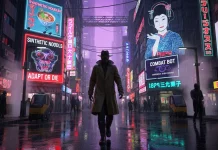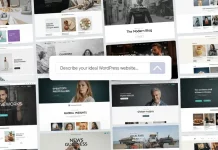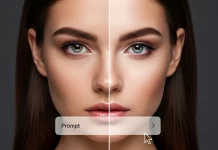This post contains affiliate links. We may earn a commission if you click on them and make a purchase. It’s at no extra cost to you and helps us run this site. Thanks for your support!
The conversation around artificial intelligence in the creative fields has shifted dramatically. It’s no longer a distant concept but a daily, practical tool. At the very heart of this transformation sits Adobe Firefly, which has evolved far beyond a simple image generator. As of June 2025, it stands as a deeply integrated creative partner, fundamentally altering how ideas move from imagination to final execution. This isn’t just another update list. This is your definitive guide to the latest Adobe Firefly advancements, from its powerful new mobile app to its multi-model ecosystem.
You have ideas that need to be seen, felt, and experienced. The challenge has always been the gap between the concept in your mind and the asset on your screen. So, how is Adobe Firefly working to close that gap for you? It accomplishes this by building an environment where your natural language prompts can generate not just static images, but also video, vector graphics, and entire design templates, all within a connected and commercially safe framework. Let’s explore what this powerful platform offers today.
What Exactly Is Adobe Firefly?
At its core, Adobe Firefly is a family of generative AI models woven directly into the Adobe Creative Cloud suite. Think of it less as a standalone app and more as an intelligent layer powering your favorite tools like Photoshop and Premiere Pro. Crucially, it was trained on Adobe Stock’s licensed library and public domain content. This specific training data is what allows Adobe to state that the content you generate is “commercially safe,” a massive advantage for professional designers, marketers, and agencies who need to use their creations without worrying about copyright infringement.
The Breakthrough Features: A Look at Firefly’s Capabilities in 2025
The platform’s power lies in its diverse and expanding feature set. These tools are designed not to replace creativity, but to accelerate it, providing a powerful starting point or an intelligent editing assistant. Consequently, your workflow becomes faster and more flexible.
From Words to Motion: Text-to-Image and Text-to-Video
The foundational feature, text-to-image, is more refined than ever. However, the true star of the show now is its video-generation capability. You can generate crisp, 5-second 1080p video clips from a simple text prompt. Imagine needing a quick B-roll shot of a “serene waterfall at sunrise” or a dynamic clip of “data flowing through a circuit board” for a social media post. Instead of searching through stock libraries, you can now generate it in moments. Furthermore, you have control over motion, camera angles, and zoom, giving you director-level input on your AI-generated footage.
Bringing Stills to Life: The Magic of Image-to-Video
What if you already have the perfect still image? Adobe Firefly now includes a remarkable Image-to-Video function. This tool analyzes a static picture and intelligently animates it, creating a dynamic video sequence. It understands depth and objects within the scene to produce logical and visually compelling motion. For instance, a photo of a placid lake can be transformed into a video with gently rippling water and clouds drifting overhead. This is an incredible tool for breathing new life into existing assets.
The New Frontier in Vector and Template Generation
For graphic designers, the introduction of prompt-based vector generation is a monumental leap. You can now describe an illustration, icon, or pattern, and Adobe Firefly will produce a fully editable SVG or vector graphic. This means you get the speed of AI generation with the scalability and editing precision required for professional logo design, branding, and illustration work. In addition, it can generate entire design templates for posters, social media, or presentations, providing a structured layout you can then refine in Illustrator or Adobe Express.
The Game Changer: The New Adobe Firefly Mobile App
Released in June 2025, the native Adobe Firefly mobile app for iOS and Android has officially untethered generative AI from the desktop. This is arguably the most significant advancement, putting immense creative power directly into your pocket.
The app brings the platform’s core functionalities—Text-to-Image, Text-to-Video, Image-to-Video, Generative Fill, and Generative Expand—to your mobile device. Whether you are storyboarding on a train or capturing an idea on the go, you have access to the same powerful AI models that fuel Photoshop and Premiere Pro.
What makes this so effective is its seamless integration with the Creative Cloud. Every creation on your phone automatically syncs, ready to be opened and polished on your desktop. You can start an idea on your mobile, then hand it off to Photoshop for fine-tuning without missing a beat. This integrated workflow is what truly sets it apart.
A Universe of Models: The Multi-Model Ecosystem
Adobe has made a very smart move. Instead of forcing you to use only its proprietary models, it has opened Adobe Firefly to an ecosystem of leading third-party AI models. Inside the Firefly interface, you can now choose to generate content using models from:
- OpenAI (Image Model)
- Google (Imagen 3 & 4 for images, Veo 2 & 3 for video)
- Black Forest Labs (Flux 1.1 & Flux 1 Kontext)
- Ideogram 3.0
- Luma AI (Ray 2)
- Pika (Text-to-Video 2.2)
- Runway (Gen-4 Image)
Why is this so important? Because each model has its own unique style and strengths. You might prefer Google’s Veo for realistic video and Ideogram for creative typography. This multi-model support lets you experiment and find the perfect aesthetic for your project without ever leaving the Firefly environment. To ensure transparency, every asset is embedded with Content Credentials, metadata that clearly states which model was used to generate it.
Firefly Boards: Where Collaboration Meets AI
Ideation is rarely a solo activity. Acknowledging this, Adobe introduced Firefly Boards, a collaborative digital canvas currently in public beta. Think of it as an interactive mood board where your team can generate ideas together.
On a Board, you can generate images and videos from text, upload and remix existing clips, and use conversational prompts to make iterative changes. For example, a team member could generate an image, and another could write, “make it more cinematic and change the season to autumn.” This shared space, powered by both Adobe and partner models, is designed for rapid, visual brainstorming and is a powerful tool for creative teams.
What’s Next? The Adobe Firefly Roadmap (July 2025 and Beyond)
The innovation isn’t slowing down. Adobe has already announced what’s coming next, with a planned launch in July 2025 for:
- Avatar Generation from Text: Describe a character, and Firefly will create a customizable avatar.
- AI-Generated Sound Effects: Generate sound effects from text prompts, a huge boon for video editors and animators.
- Voice-Powered Audio Sync: In the future, you’ll be able to sync generated audio and video simply by using your voice.
Your New Creative Partner
As a creative professional, your time and vision are your most valuable assets. The advancements in Adobe Firefly are engineered to enhance both. From on-the-go ideation with the Adobe Firefly mobile app to multi-model experimentation and seamless integration into your existing desktop workflow, the platform has matured into an indispensable partner. It handles the tedious work, offers endless inspiration, and provides a commercially safe foundation to build upon.
The question is no longer if AI will be part of your toolkit, but how you’ll wield it. With these latest advancements, Adobe Firefly makes a powerful case for being your primary generative tool of choice, bridging the gap between your brilliant ideas and the world waiting to see them.
Feel free to browse WE AND THE COLOR’s AI and Technology categories for more.

















